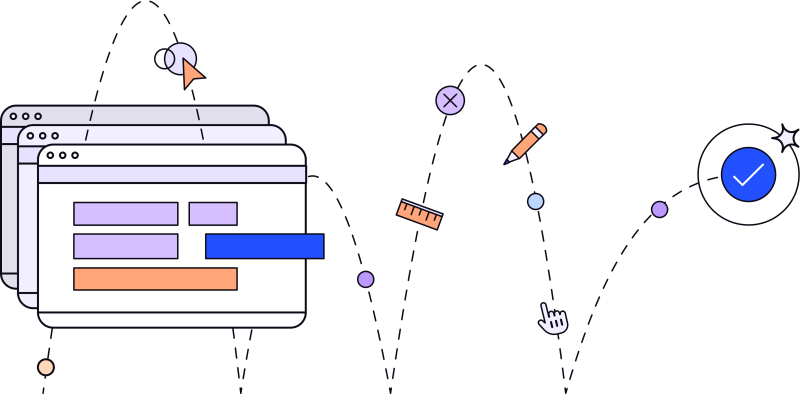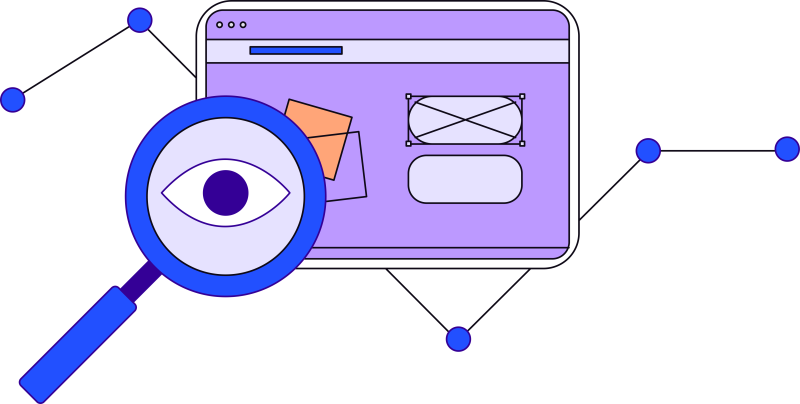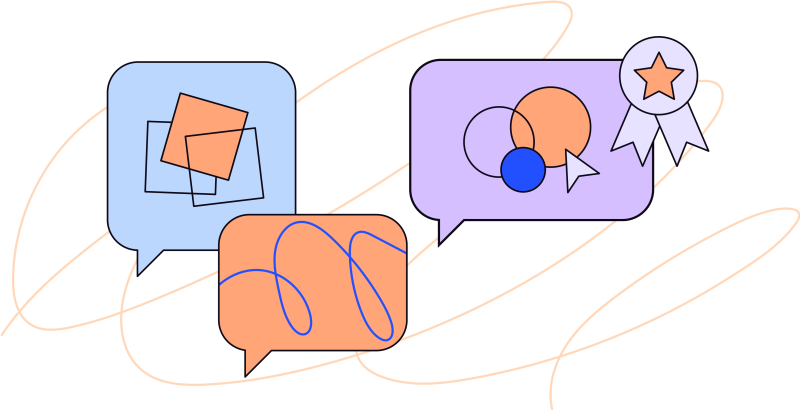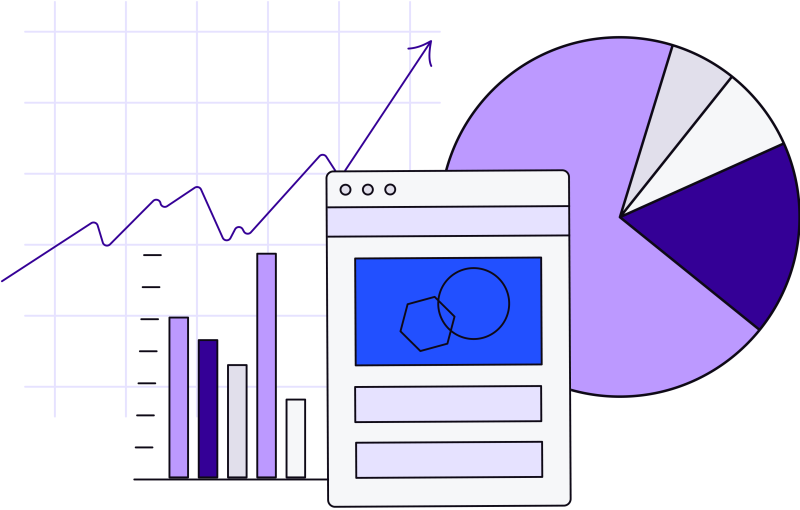Just like there’s no such thing as too many good books or sunny days, there’s no such thing as a dumb question —
especially when it comes to kicking off a new design project.
Unfortunately, it’s pretty common for product owners to not ask enough questions when they begin working on something new, whether they’re afraid of asking a dumb question or if they simply don’t know to ask.
Why does this matter? We’re glad you asked.
Going into a new design process with too few questions can be costly in missed opportunities to scale, launch a game-changing feature, or design the right user interface. Not asking questions can cause unnecessary miscommunication, assumptions, and discord between teams. Not to mention have a negative impact on your budget and timeline.
By learning what to ask at your next design kickoff you’ll ensure you’re on the right path to designing the best features for the right audiences, increase the impact of your design efforts, and be confident that you succeeded (or know when you’ve missed the mark.) But mostly, you’ll get to know the feature or product you’re designing inside and out, thereby increasing your chances to knock it out of the park.
Ready to get started?
5 Key Questions to Get You Brainstorming For Your Brand’s Next Design Project
Product owners, it’s safe to say you have a lot on your plate, so coming up with questions in preparation for a new project may not be at the top of your list. But taking time to brainstorm questions that could change the outcome of your product is well worth the extra effort. (In our expert experience, we’ve found a question brainstorming session pairs great with your favorite coffee order and Spotify playlist.)
When you’re going into your next design project, get your stakeholders together to consider these question topics and the considerations that accompany them. You’ll all be on the same page, bounce ideas off each other, and feel prepared as you kick off your next big thing.
Put Your Thinking Cap On
Time to begin brainstorming? We're ready when you are. Enter your information here to learn our 5 critical questions for beginning your project.

Who are you designing your product or new feature for? Perhaps it’s an obvious question, but it’s the most important: Who is your target audience? Consider whether you want to target all existing users or a subset of users. Are you only targeting first-time users or users who have performed a certain action? What about paying users or free users? All of these questions will change the scope of your project entirely because first-time users won’t be familiar with your product. How would this change the way you introduce them to your brand? What is your user demographic? Get data on your users’ age, gender, geographical location, education level, marital status, household income, occupation, hobbies, or other key information relevant to your brand. Then, incorporate what you know from your brand research to focus your efforts on whom you’re targeting and why. Think about your current users. Are they your product’s ideal users? If so, a design overhaul may not be necessary to keep them satisfied. Otherwise, what might you consider redesigning to attract your ideal audience? Lastly, what data do you have on your current users? Heatmaps, video recordings, and interviews with users can be a goldmine of information that can help you get into the minds of your users and build something that you’re confident excites them. Another way to know what your users like and dislike is A/B testing. You may be surprised to find out that users may not respond to your product in the way you predicted. Applying your data findings to your next design equals UX gold.

What are you designing? What are you designing? It seems like a simple question, but dig a little deeper. What are the pain points and challenges your users experiences that you can solve? Consider what is wrong, not working, or not meeting users’ needs. When and where do those problems happen, and to how many people? Find out where you learned about these issues whether through customer support, user research, or from your competitors. Sometimes you think you’re solving the right problem, but you end up missing the mark. So ask yourself if the problem you’re intending to solve is the right one, considering the data you collected. Finally, look to your competitors. Are they solving the same problem or something similar? How will your feature differ (and beat them?!).

Why are you designing this product and what is the potential impact? Don’t forget about your specific goals for this project. What are your objectives and goals for this new project? Is it what’s best for your business and customers? You never want to launch a new feature just because. How will your new project benefit your business if it’s successful? Conversely, what’s the benefit for your customer? Your answer may lean more heavily one way or another. But you’ll have to weigh the benefits and the risks to decide what’s best for your brand at this point in time, and what projects would be better left for a future project. Speaking of the future, how long do you hope this solution works before having to redesign or revisit it? Will it be worth the investment given its projected longevity?

How are you going to solve the problem? There are times when it’s okay to wing it when you go to solve a problem, like when you MacGyver a leaky sink. This is not one of those times. When you’re going into a new design project, you have to know how you’re planning on solving your problem. Have you tried solving it before? And what happens if it’s not solved? Get creative: What are three ways to solve your problem? Get a second order of your favorite coffee drink and think outside the box. Do you already have an idea? Come up with something new and different. Brainstorm with your team or someone who has a completely different viewpoint than you to see if you can find a solution that will change the game. Consider what part of the design process will take the most time to avoid going over on your timeline. Plan ahead by asking yourself about the tools you will need, who should be on your team, and who you need to communicate with along the way. Think ahead about your limitations and how you will work around them: timeline, budget, scope, technical prowess. If you don’t have a ton of time, what’s your MVP (minimum viable product)? What are the fewest features you could get away with and the shortest timeline to solving your problem? Thinking about these scenarios could save you when you’re up against the clock and need to deliver, instead of scrambling and releasing a feature that won’t move the needle.

How will you measure success? If you’re like most product owners, you’re competitive by nature. That means you’re always stacking yourself up against your competition. These questions should come as no surprise. What are your key metrics to determine your success? What do you want to improve, and how will you know when you get there (or don’t)? Define your success criteria to help determine your definition of “done.” How will you know when you’re ready to ship? How will you know when to stop to avoid diminishing returns? Lastly, how will you get feedback from users and other key stakeholders? Consider focus groups, surveys, questionnaires, and user interviews to learn more about how your new project is landing with your target audience. What should be kept? And what needs to go back to the woodshed?
Keep asking questions to design the best products
While the bulk of your question party should happen before you get started, you know designing any new product or feature is ripe with uncertainty and assumptions.
So keep asking questions!
As you get into the design process, keep your wheels turning. Questions will come to mind, so stay tuned in, and take the time to address them as they come up.
Your questions shouldn’t end after your product is in your users’ hands. Every design project has so many lessons that will only push your team to be better. So ask: What went well? Where did we get stuck, and how can we avoid that next time? How could we have handled a certain situation differently? And, what new solutions do we see after being laser-focused on this project?
If you want to build fresh products and ship features that your users will love, stay curious and get in the habit of asking questions. Preferably with your favorite coffee in hand.









